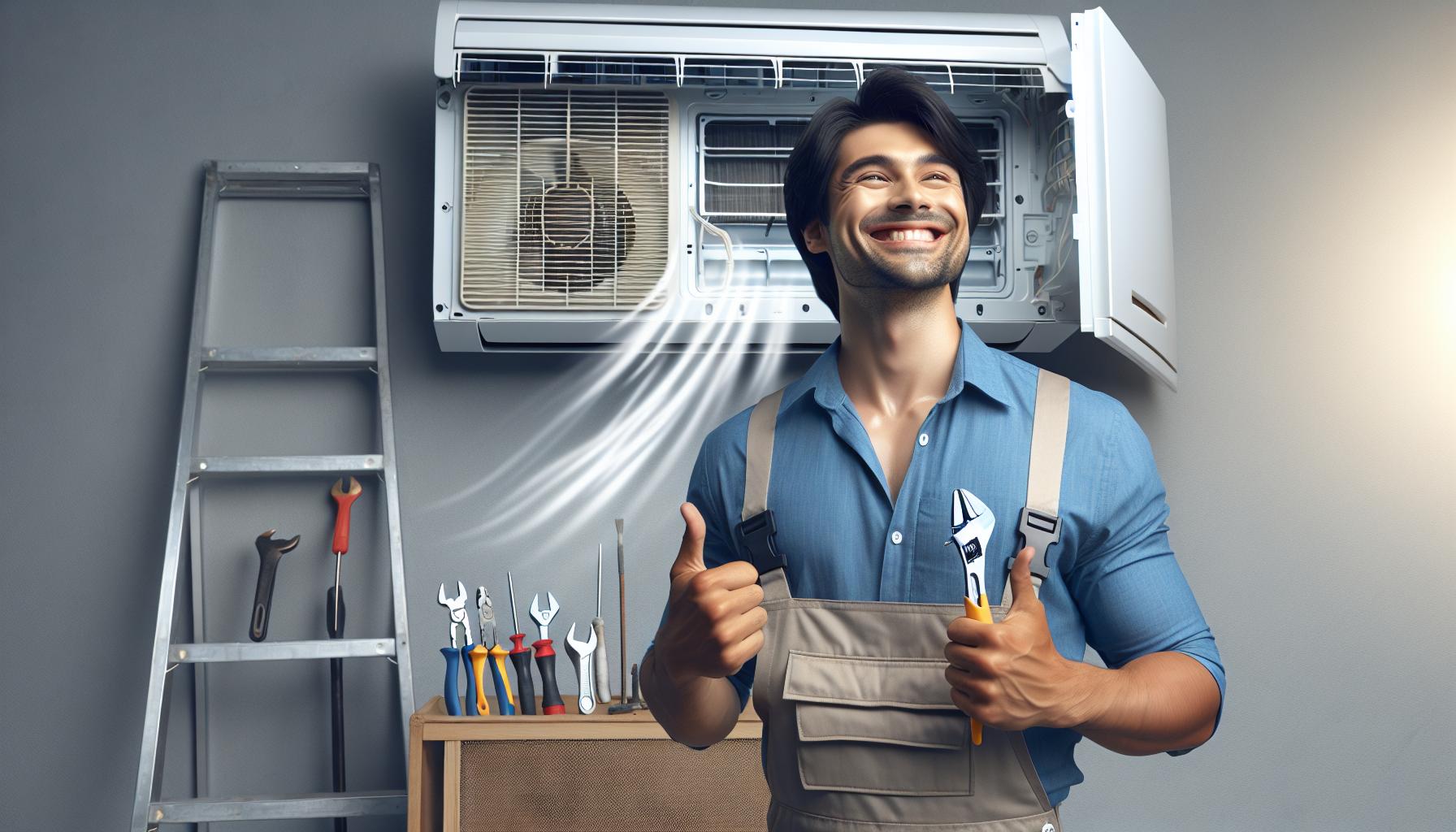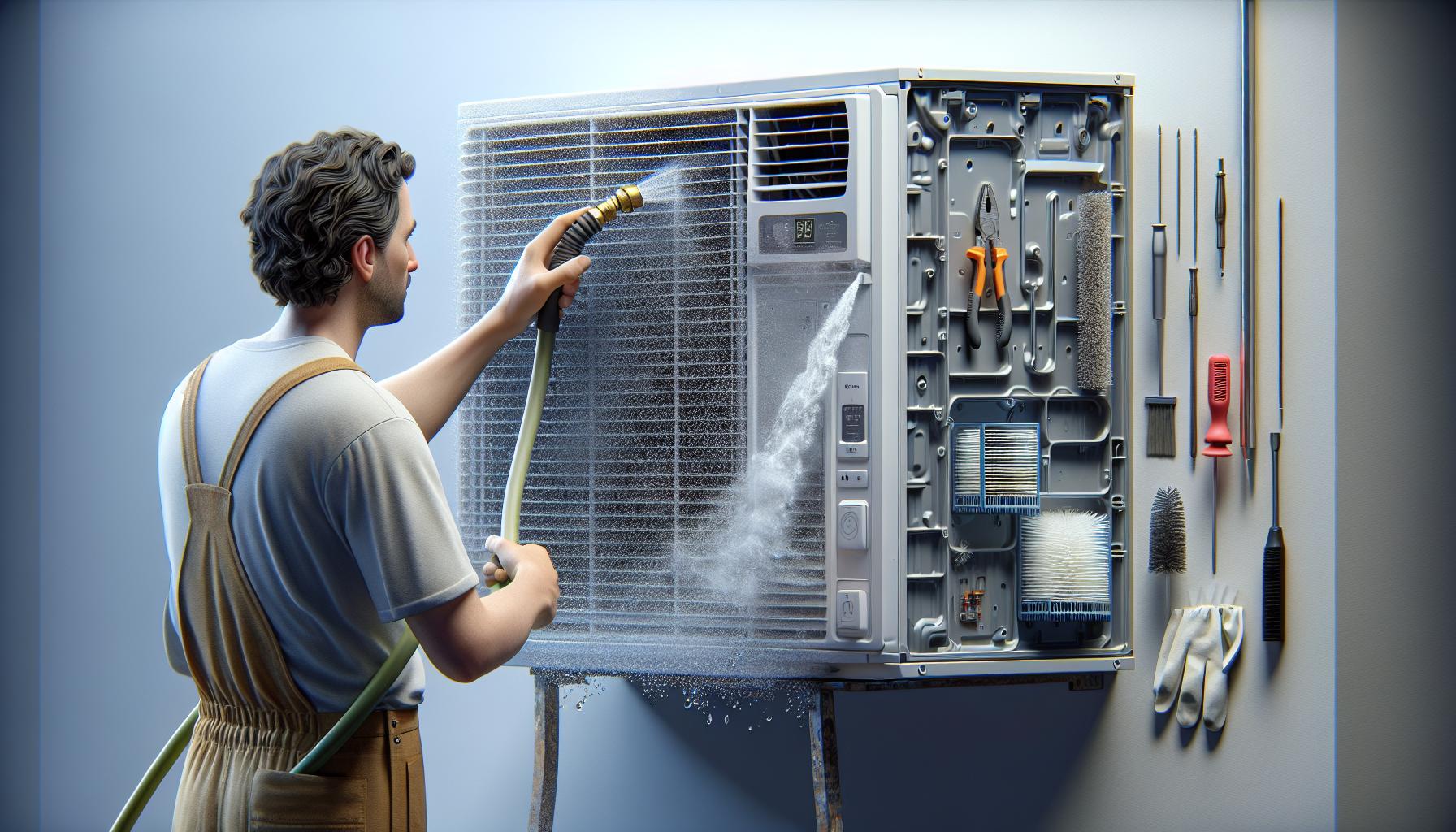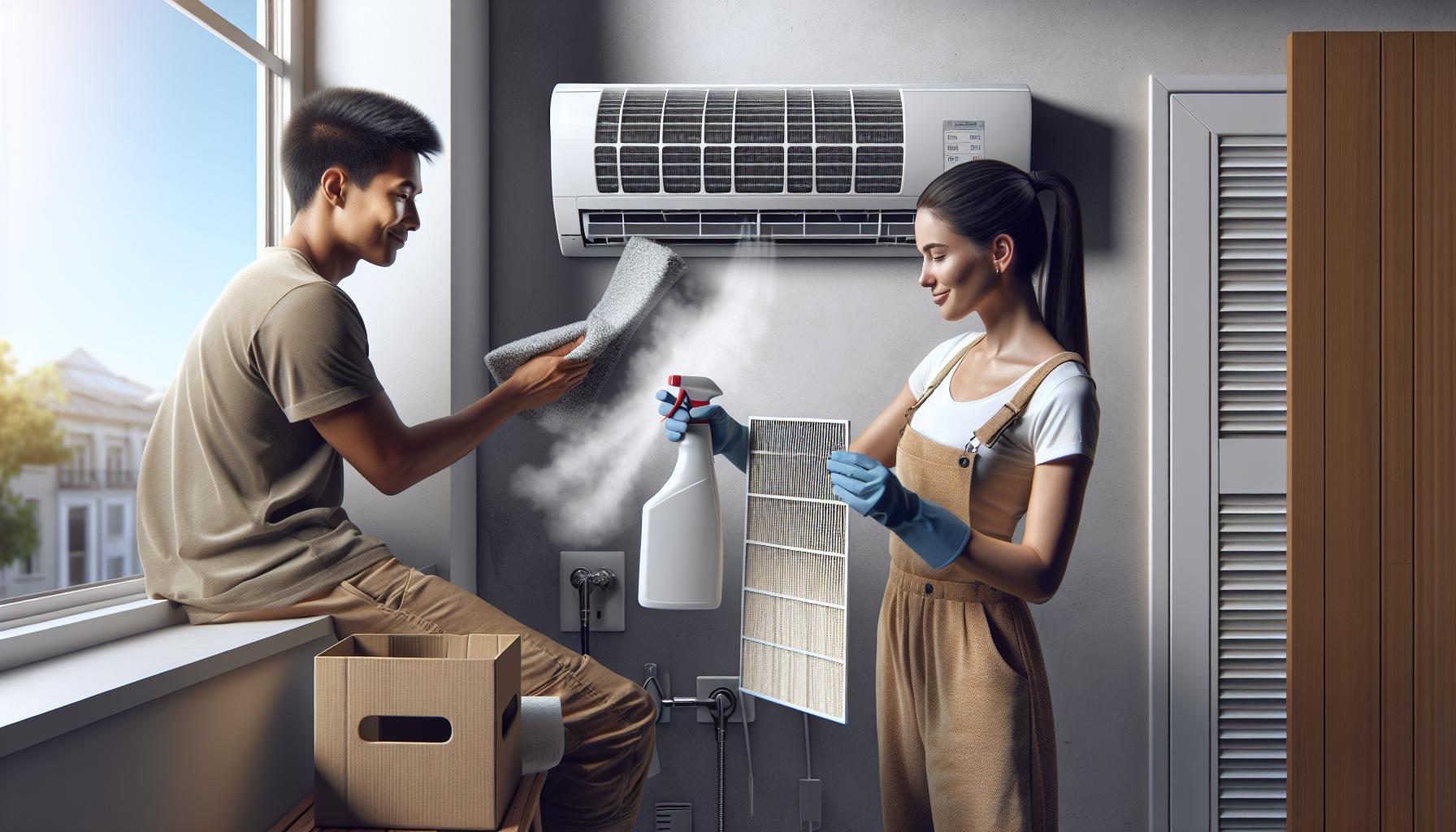Facing issues with your Richmond electric water heater can be a real dampener, especially when you’re looking forward to a warm shower. But don’t worry, you’re not alone, and often, you can fix these problems yourself. We’ll guide you through common hiccups and how to troubleshoot them, ensuring you’re not left in the cold for long.
Whether it’s a lack of hot water, strange noises, or a leaky tank, we’ve got the know-how to help you pinpoint and solve the issue. So roll up your sleeves, and let’s get your water heater back in action with some practical troubleshooting tips that could save you time and money.
How to Troubleshoot a Richmond Electric Water Heater
When you’re faced with issues regarding your Richmond electric water heater, there’s a sequence of steps you can follow to pinpoint and potentially solve the problem.
Inspect the Power Supply
Before delving into more complex troubleshooting, ensure that the power supply to your heater is intact.
- Confirm the circuit breaker hasn’t tripped. If it has, reset it.
- Check for any blown fuses in your main electrical panel.
- Verify that the heater’s switch is turned on.
Test the Heating Elements
Faulty heating elements are a common culprit for water heater issues.
- Use a multimeter to test both the upper and lower heating elements for continuity.
- If one does not have continuity, it needs to be replaced.
Remember to shut off the power supply before touching the elements to avoid electric shock.
Examine the Thermostat
An improperly functioning thermostat might prevent your water heater from working correctly.
- Ensure the thermostat is set to the appropriate temperature (usually between 120-140°F).
- Use a multimeter to check the thermostat’s function.
Inspect for Sediment Build-Up
Sediment build-up in the tank can lead to multiple problems.
- Drain and flush the tank regularly to prevent build-up.
- Listen for popping or rumbling noises, signs that sediment may need to be cleared.
Check the Pressure Relief Valve
The pressure relief valve is crucial for safety and the proper functioning of your water heater.
- Test the valve by lifting the handle and letting it snap back.
- Water should flow freely from the discharge pipe and stop when you release the handle.
If the flow doesn’t stop, the valve may need replacing.
By following these steps, you’ll be able to determine if the issue with your Richmond electric water heater can be resolved on your own or if it’s time to call in a professional. Remember, safety is paramount, so always take appropriate precautions and consider consulting a specialist if you’re unsure.
Lack of Hot Water: Possible Causes and Solutions
When your Richmond electric water heater isn’t delivering hot water, addressing the issue quickly is crucial. Below are common causes and reliable solutions to restore your hot water supply.
Tripped Circuit Breaker or Blown Fuse
Occasionally, a tripped breaker or blown fuse may be the culprit. Here’s what to do:
- Locate your home’s electrical panel.
- Identify the breaker or fuse connected to the water heater.
- If tripped, switch the breaker to the ‘off’ position and then back ‘on’.
- If a fuse is blown, replace it with a new one of the same rating.
Faulty Thermostats
A malfunctioning thermostat can fail to signal the elements to heat water.
- Check both the upper and lower thermostats.
- Use a multimeter to test for continuity.
- Replace any thermostat that does not have continuity.
Malfunctioning Heating Elements
The heating elements may burn out over time, resulting in a lack of hot water.
- Shut off the power supply to the heater.
- Test each element with a multimeter.
- Replace any element that does not show an appropriate resistance value.
Sediment Build-Up
Sediment accumulation can insulate the heating elements and reduce their efficiency.
- Drain and flush the tank to remove sediment.
- Perform this maintenance regularly to prevent future build-up.
High Demand
In situations with high hot water usage, your water heater may struggle to keep up.
- Consider spreading out the usage or upgrading to a heater with a higher capacity.
Incorrectly Sized Unit
If the unit is too small for your home’s needs, it may not produce enough hot water.
- Assess your hot water needs.
- If necessary, upgrade to a unit that matches your household requirements.
By systematically checking each potential issue, you can identify and resolve the problem with your Richmond electric heater. Remember, if you’re uncomfortable handling electrical components, it’s always safe to call a professional.
Strange Noises: What They Mean and How to Fix Them
If you’re hearing unusual sounds from your Richmond electric water heater, it’s important to diagnose the issue promptly. Strange noises can be a sign of serious problems that may require immediate attention.
Popping or Cracking Noises
One common noise you might encounter is a popping or cracking sound. This is typically caused by the build-up of sediment at the bottom of the tank. When water is trapped beneath the sediment layer and begins to heat up, it produces these sounds as it escapes.
To fix this issue, you should:
- Turn off the power supply to your water heater.
- Connect a garden hose to the drain valve and lead it to a safe location.
- Drain the tank completely to flush out sediment.
- Refill the tank and restore power.
Humming Sounds
Another noise you may hear is a low-level humming. This occurs when the heating elements inside the water heater begin to vibrate. It’s not a sign of a malfunction but may be annoying.
To stop the humming:
- Tighten the heating element securely to prevent the vibrations that cause humming.
- Ensure that the element is positioned correctly.
High-Pitched Whining
High-pitched whining or screeching can indicate scale build-up on the heating elements or a restricted flow in the tank. Over time, mineral deposits from the water can accumulate on the elements.
To remedy the whine:
- Shut off the power.
- Remove the heating elements and clean any scale with vinegar or a descaling solution.
- Check for and clear any obstructions in the valves or pipes.
By addressing these noises when they arise, you’ll keep your water heater in optimum condition and reduce the risk of future breakdowns. Regular maintenance such as tank flushing, checking for loose parts, and keeping components clean will help minimize the occurrence of these sounds. If you’ve tried these tips and still have issues, it’s wise to contact a professional technician. Remember to always prioritize safety when dealing with electrical appliances and to refer to your owner’s manual for specific instructions.
Dealing with a Leaky Tank: Steps to Stop and Prevent Leaks
Discovering a leak in your Richmond electric water heater can be a source of concern, but with the right approach, you can handle the issue effectively. Immediate attention is key to preventing further damage and costly repairs.
Identify the Source of the Leak: The first step is pinpointing exactly where the leak is coming from. Check the tank, valves, and connections.
- Inspect the Temperature and Pressure Relief Valve (T&P Valve) to see if it’s the source. If water is leaking from the valve, it may indicate excessive pressure or temperature inside the tank.
- Examine the heating elements’ gaskets—if they have failed, they need to be replaced.
- Look at the connections to the water heater, ensuring they’re tight and sealed.
Fixing the Leak:
- T&P Valve: Test the valve by lifting the lever and draining some water into the drain tube. If it continues to leak after being tested, it’s time to replace the valve.
- Gaskets: Turn off the power and water supply. Drain the tank, remove the elements, and replace the faulty gaskets.
- Pipe connections: Use a pipe wrench to tighten the fittings. If that doesn’t stop the leak, thread seal tape or compound may be needed to ensure a watertight seal.
Preventative Measures:
Preventing leaks from occurring in the first place can save you a lot of trouble.
- Drain and flush the tank regularly to prevent sediment build-up, which can corrode the tank and fittings.
- Check the anode rod at least once every two years. If it’s depleted, replace it to protect the tank from corrosion.
- Keep the water pressure within safe limits to reduce stress on the water heater and its components.
Remember, if you’re unsure about handling any aspect of leak repair, it’s wise to get in touch with a professional. Regular inspections and maintenance by an expert can extend the life of your water heater.
Other Common Issues to Look Out For
As you navigate the maintenance of your Richmond electric water heater, you’ll need to be vigilant about other potential complications. Beyond leaks, temperature mishaps, and power supply issues, several common troubles might arise.
Tripped Reset Button
Frequent tripping can signal an underlying concern such as faulty wiring or a malfunctioning thermostat. When the reset button on your water heater trips, it’s urging you to investigate further.
- Check for any loose or damaged wires.
- Inspect the thermostat for proper functioning.
- Consider the age of your water heater as older units are more prone to issues.
Discoloured Water
If you start getting rusty or black water from your taps, it could be due to corrosion inside the tank or the pipes.
- Inspect the anode rod and replace it if it’s deteriorated.
- Flush the tank to remove any built-up sediment.
Noisy Operation
A water heater making strange noises like banging or popping is typically telling you there’s a build-up of sediment.
- Perform a full flush of the tank to clean out sediment.
- Check the heating elements for scaling and clean or replace as necessary.
Smelly Water
Foul odours are often a sign of bacteria buildup in the tank. This can be especially common in systems that have been idle for a while.
- Flush the tank with a solution of water and hydrogen peroxide to kill any bacteria.
- Adjust the temperature to above 60°C to inhibit bacterial growth.
Water Temperature Fluctuations
Inconsistent water temperatures can result from various failings within your heater’s mechanisms.
- Ensure the thermostat is set correctly and functioning.
- Inspect the dip tube for faults, replacing if required.
Addressing these issues promptly can save you from more significant inconveniences down the road. Keep an eye out for these red flags and perform regular checks to ensure your water heater remains in top-notch condition.
Conclusion
Armed with these troubleshooting tips you’re now well-equipped to tackle common problems with your Richmond electric water heater. Regular maintenance and timely checks are your best defence against unexpected issues. Remember it’s always worth consulting a professional if you’re unsure about any steps or if problems persist. Keep your water heater running smoothly and you’ll enjoy uninterrupted hot water whenever you need it. Stay proactive and your Richmond electric water heater should serve you well for years to come.
Related Posts:
- Fix Your Richmond Heater: Gas Troubleshooting Tips
- Step-by-Step Guide: Reset Your Richmond Water Heater Easily
- Fixing Richmond Heaters: No Hot Water Troubleshoot Guide
- Decode Richmond Water Heater Blinking Light Codes:…
- Fixing Richmond Water Heater Gas Valve Issues: A…
- Fix Common Dimplex Electric Fireplace Issues &…




